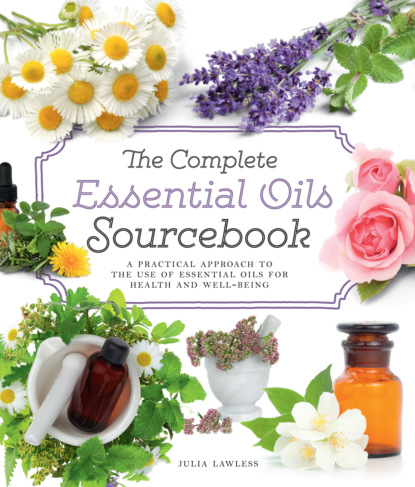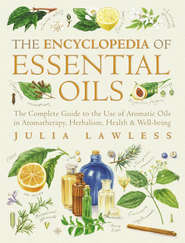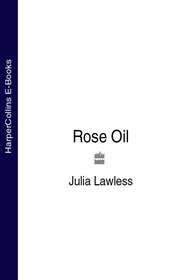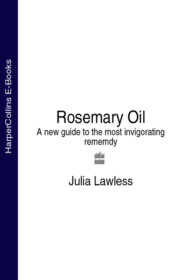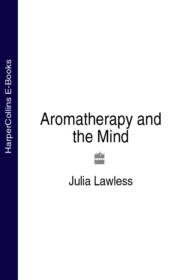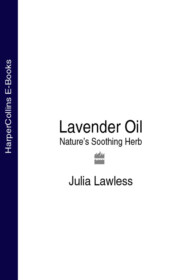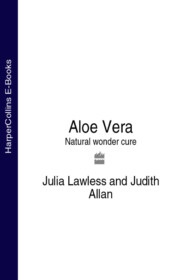По всем вопросам обращайтесь на: info@litportal.ru
(©) 2003-2024.
✖
The Complete Essential Oils Sourcebook: A Practical Approach to the Use of Essential Oils for Health and Well-Being
Настройки чтения
Размер шрифта
Высота строк
Поля
Medical aromatherapy
Medical aromatherapy includes the systematic use of essential oils in the treatment of clinically diagnosed medical conditions. It adopts a wide range of methods, including oral prescription. It should only be practiced by suitably trained medical doctors or by clinical therapists, who, like qualified medical herbalists, have undergone a training period of at least four years. This is the approach of the 20th-century founder of aromatherapy, René-Maurice Gattefossé, and his scientific and medical successors.
Simple aromatherapy (#ulink_d265d3d7-7c5b-59ce-98d3-9ae5345e55f5)
THE PRACTICE OF AROMATHERAPY benefits from being placed within the context of holistic health care as a whole. Whereas the emphasis in modern allopathic or orthodox medicine is to target a given complaint with a specific remedy, from a holistic point of view, the best form of treatment is always a multifaceted one. The air we breathe, our nutrition, exercise, relaxation, and, above all, our emotional or mental disposition, are all essential factors which need to be taken into account.
Holistic health care is more concerned with cultivating an understanding of healthy living and of preventive techniques than with providing symptomatic relief. In any case of “disease,” it is vital to assess the overall health of the person, both physically and mentally, and then to try and ease the problem at its source, while at the same time building up the body’s natural immunity. It is preferable to prevent the problem from occurring in the first place.
Preventive medicine is not given enough value or emphasis in Western society today. It is all too easy to let health slide, then reach for a bottle of pills when something goes wrong. Yet most people are prepared to service their car regularly, rather than wait for the inevitable breakdown to occur. Why do we not seem to take the same precautions to nurture both our bodies and minds as in the East? There, many patients traditionally receive acupuncture treatment at each change of season to ensure that the body and mind remain in optimum health for the following quarter. It is also still traditional for Chinese people of all ages to gather outside in the mornings to practice tai chi, an ancient martial art form which combines gentle exercise with moving meditation to promote good health and longevity.
From the perspective of holistic health care, a wholesome diet, fresh air and sufficient exercise, together with a sense of emotional security, intellectual satisfaction, and some form of daily spiritual or psychological nourishment are all factors that can help to preserve a sense of well-being. Herbal tonics and natural aromatics have also held a traditional place in the preventive medicinal practices of many cultures, both ancient and modern. It is certainly true that people who are exposed to the beneficial effects of essential oils on a daily basis tend to have a greater resistance to disease in general.
“Consciously or unconsciously, every being is capable of healing himself or others …”
INAYAT KHAN
Tai chi exercises provide a way of keeping fit both mentally and physically.
“People who use essential oils all the time, as part of their daily bathing, skincare and household routines … have a high level of resistance to illness, ‘catching’ fewer colds … than average and recovering quickly if they do.”
Essential oils exert a psychological lift (called their “cephalic effects”) and help to promote a positive mental state, while, on a more physiological level, they stimulate the immune system and exhibit all types of preventive and curative properties. In the words of the French medical aromatherapist, Dr. Daniel Penoël:
“Aromatic medicine is a preventive healing focusing on the evolutionary side of all living beings in the Biosphere, be it in the animal or the vegetable kingdom.”
The pressures of Western society place many stresses and strains upon the individual. If these are not recognized, they can lead to more serious health problems. Aromatherapy, with its holistic approach to health and well-being, can be used to intervene and prevent long-term problems occurring.
A holistic approach (#ulink_35116835-ee91-54f7-99f4-4d727c6e63f8)
APART FROM AROMATHERAPY and medical herbalism, there are many other types of alternative treatment that can be used in holistic medicine to complement and enhance one another. A condition such as osteoarthritis, for example, benefits from a multifaceted approach that would include specific herbal remedies, dietary changes, gentle exercise, aromatic baths, and massage treatments, as well as osteopathy, and possibly even pyschotherapeutic advice. On the other hand, it is possible to treat a condition such as a boil or bruise more simply at home with a combination of dietary nutrients and local aromatic applications. This book refers to the related treatments wherever possible.
In the section on aromatic remedies (here (#litres_trial_promo)), each complaint is defined and a number of different methods of treating the problem are suggested, both with the use of essential oils in a variety of ways and with supportive techniques. “We are what we eat” is perhaps overused as a slogan, yet its truth remains. In holistic health care, and in the field of preventive medicine in particular, diet, together with a positive mental attitude is very influential in maintaining well-being. Details of the specific vitamins that are required by the body, and their dietary sources, are given at the end of the book in the Appendix, Vitamins and dietary sources (#litres_trial_promo).
Other types of treatment that are raised and given emphasis in the discussion of treatment in this book are the use of Bach flower remedies, allergy testing, osteopathy, psychotherapy, counseling, yoga and relaxation, and meditation and prayer. Despite this emphasis upon alternative medicine as prevention and treatment, orthodox and alternative approaches should not be seen as necessarily working in opposition. Each has its own value: what is required today is an integration of modern scientific techniques and traditional knowledge. In India and China, for example, traditional forms of medicine are being used alongside the newly adopted surgical skills and other modern innovations, while in the West there has been a surge of interest in the medicinal potential of aromatic materials and herbal medicine.
Borage is used to make a base oil and is very beneficial to the skin.
Body and mind
Aromatherapy treats mind and body together. The scent of the essential oils used can have a powerful effect on the emotions while the oils’ chemistry affects the body.
A wholesome and balanced diet, with plenty of fresh fruit, plays an important part in maintaining health.
Yoga quickly makes the body more supple and helps to maintain mind–body awareness.
The aromatic medicine chest (#ulink_23726a4a-9a8d-55dc-bbf6-19396f28162f)
LIKE TRADITIONAL HERBAL remedies, essential oils are very valuable self-help tools because they are effective in the prevention and treatment of many common conditions, yet are simple and easy to use. It is wise to build up a collection of the most useful essential oils, together with a small selection of vegetable base or carrier oils and creams for use in the home medicine chest. The most important of these are arnica ointment, calendula cream or oil, grapeseed oil, sweet almond oil, jojoba oil, and wheat germ oil (see here (#litres_trial_promo) for a full list of base oils).
Many essential oils, apart from being used for first aid or for the treatment of common complaints, are also ideal as bath oils, perfumes, or room fresheners. Even when they are used purely for esthetic purposes, they are still fulfilling a positive preventive and therapeutic role. A small, essential aromatic oil kit can prove to be an extremely valuable asset at home, in the workplace, or while on vacation, and when traveling. There is a group of five invaluable oils to keep in the home medicine cabinet, or to take with you when traveling: lavender, tea tree, rosemary, Roman chamomile, and peppermint.
There is a second group of 30 other oils that can also prove very useful, although they are not always the most popular or pleasantly scented (see here (#ulink_af7544b5-b5c6-5da3-be50-c83eb76654ae)). In the section on specific remedies (#litres_trial_promo), several essential oils are usually mentioned for each illness, including some from an additional group of 30 (see overleaf). It is not, however, necessary to buy all the oils listed, as it is possible to treat many common illnesses by using up to five oils, especially when the oils are mixed or blended together in various combinations. The recommended blends which are highlighted in the section on the treatment of specific problems are always made up from a selection of the essential oils listed overleaf.
JASMINE
CHAMOMILE
LAVENDER
ROSE PETALS
Essential oils for the medicine chest
Group 1
Lavender is extremely versatile, especially for stress-related disorders and for skin complaints.
Tea tree is invaluable for its antiviral, antiseptic, fungicidal and immune-stimulant properties.
Rosemary has stimulant properties, and is an expectorant as well as being a tonic to the entire system.
Roman Chamomile is a mild relaxant and anti-inflammatory agent, especially as a children’s remedy.
Peppermint is good for digestive complaints such as nausea or indigestion, and for respiratory problems, and for treating fever.
Group 2
Atlas cedarwood
Bergamot
Black Pepper
Carrot seed
Clary Sage
Clove bud
Cypress Eucalyptus blue gum
Frankincense
German (blue) chamomile
Ginger Grapefruit
Jasmine
Другие электронные книги автора Julia Lawless
Rose Oil




 0
0





